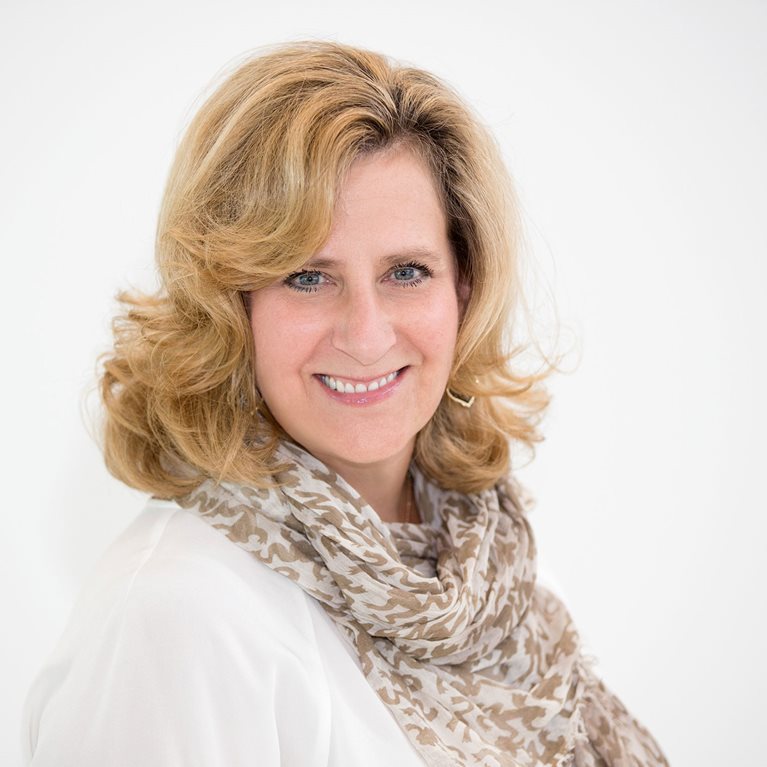F. Hoffmann-La Roche (Roche) is a leading global healthcare company; it is 122 years old, is family owned, and has about 94,000 employees in more than 100 countries. It is the world’s largest biotech company, offering medicines for oncology, immunology, infectious diseases, ophthalmology, and diseases of the central nervous system. Additionally, Roche is a leading provider of in-vitro diagnostics and tissue-based cancer diagnostics, as well as diabetes management.
The company is undertaking a transformation to become a more agile and digital organization. Part of the foundation for this effort has been a global leadership initiative designed to help senior leadership develop the mind-sets and capabilities they need in both personal and organizational transformation.

Tammy Lowry, Roche’s head of talent innovation, recently sat down to discuss this initiative with Paul Byrne, president, Europe, Full Circle Group, and Michael Lurie, partner, McKinsey, who are experts in agile and leadership transformations. An edited version of the conversation follows.
Michael Lurie: What prompted Roche to prepare its leaders to build and lead a more agile and digital organization?
Tammy Lowry: To ensure the long-term success of the company in a dynamic environment, Roche is always looking to innovate and improve the ways we work—always with the purpose of getting our medicines and diagnostic solutions to patients faster. Our portfolio is currently in a transformation phase. We are facing competition by biosimilars entering the market while, at the same time, we are launching an unprecedented number of new medicines. Digitization will transform the way we research and develop medicines and how patients and their physicians decide whether, when, and how to treat their diseases. This is creating a huge number of changes in a short period of time.
In this dynamic environment, our ability to respond well to whatever happens requires a different approach and a more agile mind-set, especially for our senior leaders across the organization. Over the previous seven years, we’d done a lot of work within Roche on leadership, including the introduction of leadership commitments where the expectation was not just about delivering the business but also focusing specifically on people leadership. But we had to ask ourselves if this was enough.
Paul Byrne: So you needed a program to prepare leaders differently. How did you go about doing so?
Tammy Lowry: At the time we were looking, agile was becoming a big topic, but we couldn’t find what we were looking for; I think we were looking for a unique combination of content. The prospect of something new and different was exciting—and it required a lot of trust.
Michael Lurie: In our experience, agile transformation can mean a pretty fundamental transformation—not just another change. Successful agile transformation requires both personal transformation in leaders and organizational transformation. And these personal and organizational transformations are mutually interdependent.
Paul Byrne: It’s exciting to try something different, to take a risk, to not have all the answers. This requires exploring what combinations of content and experiences might stimulate leaders to challenge old assumptions and reimagine their personal leadership and their organization.
Michael Lurie: It’s powerful when the process of designing the program is agile—the experimental act of encouraging and trusting each other. First run a “low fidelity” pilot to test the design, then refine.
Tammy Lowry: That is what we did. Over about three weeks, we came up with an initial three-day design, which is still 80 percent of what we do. The impact of the first pilot was exceptional. People came out saying it was one of the best leadership experiences of their careers. We refined the elements into a four-day program and ran a second pilot, wondering if we would get a similar outcome. We did, and we concluded it was probably not a coincidence.
Paul Byrne: One of the fun things about doing this is, you have to remind yourself to embody what you’re trying to convey to the participants. This means, rather than “reactive mind-sets” of anxiety and stress, working together with “creative mind-sets” of purpose, trust, and possibility. Can you explain the design and take us through the program?
Tammy Lowry: Kinesis is a four-day program that starts with a 360-degree assessment (the Leadership Circle Profile) that aims to help leaders understand how their mind-sets and behaviors directly impact the effectiveness of their leadership. We begin the program with a disruption to the status quo by challenging leaders to confront patterns of thought that, while successful in the past, may now limit their effectiveness. The personal-leadership work on the first day opens people to a different kind of organizational conversation on the second day, when we introduce participants to the principles and practices of agile organizations.
The third day is a day of integration and application, focused on reimagining Roche, on imagining what could be in various parts of the organization. Participants come up with specific ideas to make our structures, processes, and culture more agile. And they explore personal transformation: What is the one big thing to focus on as a leader? They also explore organizational transformation, what is required of leaders, and how to engage others in the transformation journey.
On the final day, the participants run a real-time experiment. They are given a morning with a member of the executive committee—not to present outcomes or for the executive-team member to present to them. Instead, the participants design their own approach to the morning that will result in a creative dialogue about a transformation at Roche.
The results have been stunning—some of the most emotional, impactful, and meaningful moments of the program—both for the participants and the executive-team member joining.
As a follow-up to the program, we offer workshops for intact teams. But this is an invitation, not an expectation: “Now that you have had an insight into a different Roche, have that conversation with your own leadership team. Start to think about your own organization through these workshops, and explore what experiments you might want to consider.” Positioning the program and follow-up this way has been a key to its success.
Michael Lurie: We find it most powerful when programs are based on a very experiential approach, where participants teach each other. If the leadership mind-set is not addressed first, then all of the other practical ideas participants get about agile organizations could receive the response, “That won’t work here.” But by shifting and making leaders aware of, and open to, different ideas, generating space for a creative mind-set, all those practical ideas became more acceptable. They immediately put those ideas to work. There is no space between the learning and the application—it’s all interwoven and integrated.
Paul Byrne: I agree. Personal transformation must precede organizational transformation. Until leaders can become aware of, and make conscious choices regarding, their personal leadership, it is very difficult to lead complex change.
Michael Lurie: Yes. And as people begin to make this inner shift, it’s important to help them learn pragmatic ideas about what to do with that shift. Often you unlock people, and they want to change, but they do not know what to do or where to go. The majority of senior leaders going through programs like this have spent years, even decades, honing their current understanding of business and organizations. Now they’re learning a whole new way to think about organizations and how to shift from a traditional organization designed for command, control, and value capture to an agile organization designed for innovation, collaboration, and value creation.
Paul Byrne: How did you start to see the changes in individual mind-set? What was the individual impact?
Tammy Lowry: We’ve heard dozens of stories of leaders coming back from Kinesis and beginning to show up differently. I was in a meeting a while ago, and after ten minutes, a senior leader turned to me in front of the others, choked up, and then said quietly, “I want you to know, that program changed my life.”

Leading agile transformation: The new capabilities leaders need to build 21st-century organizations
But it impacts everyone differently. One individual, highly successful, took a few months to start fostering a different kind of conversation in his organization. But once he got going, he began to truly empower people to start trying new things, and he personally modeled that in a very transparent way.
I am still hearing this today. It is also true that employees started to notice differences in their senior leaders. These comments come unsolicited and all the time in conversations about business transformation across the organization.
Michael Lurie: How does this impact play out at the organizational level?
Tammy Lowry: We are seeing many examples of experiments at different levels, from individual affiliates [country organizations] to much broader and deeper initiatives. For example, one entire regional commercial organization is realigning on agile principles. And the way we move molecules from R&D to patients is being redefined in a more streamlined and empowered way. The momentum is amazing.
It’s humbling and exciting to see some of the ideas birthed in the “reimagining Roche” session being translated into reality. Leaders across the organization are holding workshops to bring this learning to the next level of leaders; they’re forming cross-functional, agile teams to begin redesigning key structures, processes, and business models; they’re dismantling cumbersome bureaucracy; and they’re engaging and empowering people in new and powerful ways.
Michael Lurie: We have been involved in programs with other organizations where there was more formal focus on metrics and return on investment. Here, it seems the results have been so manifest that there hasn’t been much call for traditional metrics.
Tammy Lowry: So many leaders have visibly chosen to make personal and organizational changes. This is energizing thousands of people, and these shifts in organizational and business models will clearly allow Roche to better focus on and serve its customers, accelerate its operations, increase its efficiency, and increase employee engagement. So Roche is hitting metrics on multiple dimensions, just based on what we are seeing across the organization.
Impact also means a sustainable legacy. These leaders are now taking this transformation further into the organization. We’re helping them put together workshops for the teams they lead. Now we’ve developed an internal agility working group of over 100 facilitators, and we’ve already delivered hundreds of shorter workshops, bringing this learning to about 4,000 next-level leaders so far. This is not about big programs or big spending; it is about choosing those right things along the way.
Paul Byrne: We have talked about the need for the program, the design, the individual, and the organizational experience, as well as some lessons for other organizations. More broadly, what can you expect or hope for from a transformation initiative of this kind?
Tammy Lowry: Big corporations are a force of change in the world. Corporations are made of people, and if we do not focus on this kind of development for people, we are not going to get the impact that we could have. If not us, then who? Our leaders hold the possibility of creating space for employees to do amazing things.
Paul Byrne: A primary tension in life and leadership is the tension between purpose and safety, between the part of us that wants to make a difference and demands our full commitment and another part of us that might not be up for that much risk. This tension is inherent. It lives in all of us, all the time. During programs like this, leaders have an opportunity to explore this tension and experiment with choices and approaches that point themselves and the organization toward a more courageous and purpose-driven future.
Michael Lurie: An organization is a collective manifestation of its leaders: what they think, decide, and how they show up—that’s pretty much what it is. So the most pragmatic way of releasing its potential is to shift the collective consciousness and capabilities of the leadership.
When you do this, you create the space for the reimagining of the organization in a way that nothing else could. This shift is fundamental—not just another process, but more a different way of being, of understanding and experiencing and viewing organizations. It is about unleashing our full human potential.
Paul Byrne: Can you imagine an organization where people bring their whole selves to work and are valued and encouraged in doing so? What might they imagine in terms of products, services, and customer experience? How might they streamline processes and reduce bureaucracy? How might they begin to work together with much greater transparency, trust, and collaboration? How might they deliver much greater impact, more quickly and fluidly, to patients, providers, and other stakeholders?
Michael Lurie: This is an incredible example of emergent transformation. We have long had the idea of traditional change management: define where you are and where you want to be, and then get all involved to make the shift from A to B. This is typically done through detailed change programs, managed centrally by a small senior team. The reality is that in today’s environment, that is not a useful model anymore—the world is changing too quickly.
Tammy Lowry: A different approach is possible. If you invite your senior leaders to show up differently personally, and to reimagine how they think about business and organizations, and you are genuine about that and sustain it, it is incredible what can happen. Your leaders will need a vision, a framework, new mind-sets and capabilities, and support when needed—but not much beyond that. People are amazing and are capable of far more than we often imagine.
The big difference here is that this program is an invitation, not a mandate. This mind-set enables the change to be organic across the organization. Leaders take the concepts and apply them in a way that works in their business context. It’s a very pragmatic, fit-for-purpose approach.
As a team supporting this transformation, our role is to simply feed this in the way that it can grow naturally. The impact of the program has been beyond our wildest imaginations and, for many members of my team, the greatest experience of their professional lives. And the great news is that we don’t have to do it all. Our job now is to watch the growth and ask ourselves, what is needed next to sustain this transformation?

